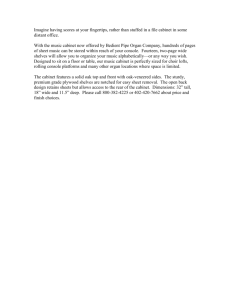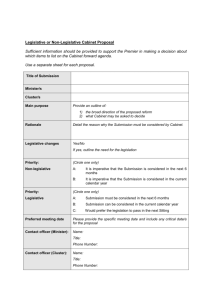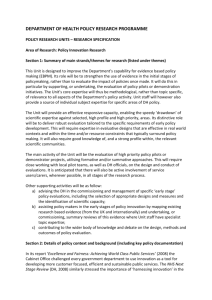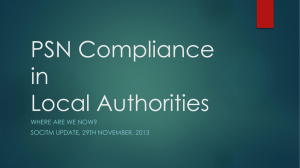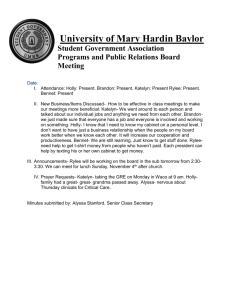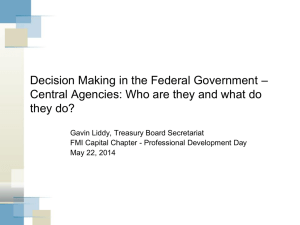COMMUNICATIONS STRATEGY - Department of Premier and Cabinet
advertisement
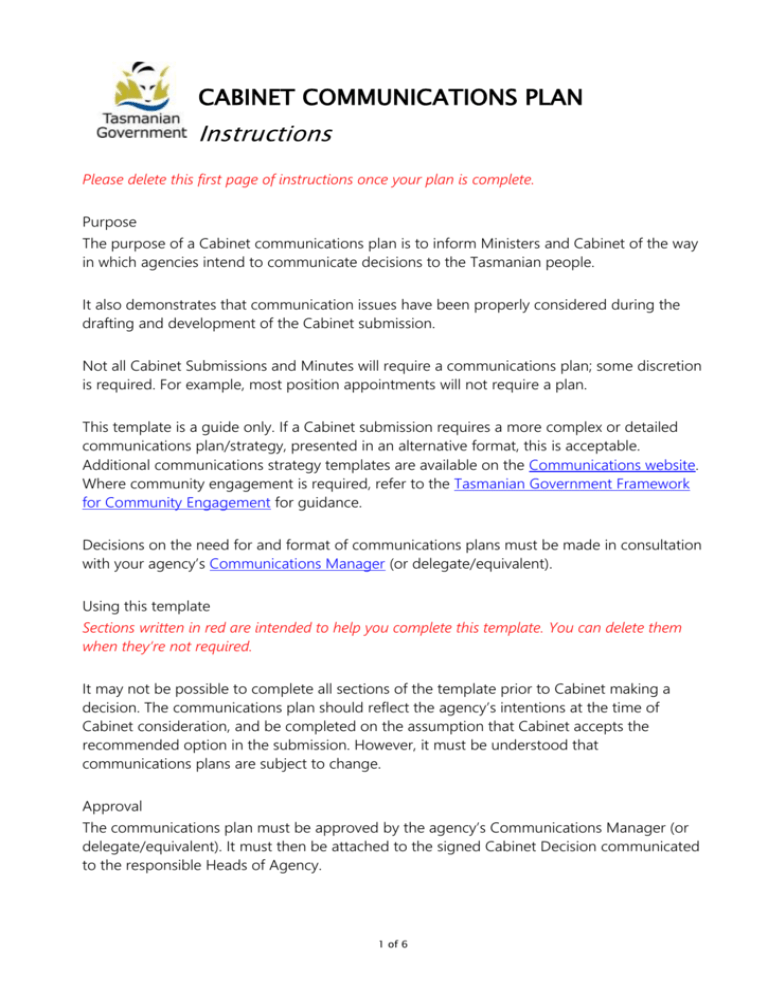
CABINET COMMUNICATIONS PLAN Instructions Please delete this first page of instructions once your plan is complete. Purpose The purpose of a Cabinet communications plan is to inform Ministers and Cabinet of the way in which agencies intend to communicate decisions to the Tasmanian people. It also demonstrates that communication issues have been properly considered during the drafting and development of the Cabinet submission. Not all Cabinet Submissions and Minutes will require a communications plan; some discretion is required. For example, most position appointments will not require a plan. This template is a guide only. If a Cabinet submission requires a more complex or detailed communications plan/strategy, presented in an alternative format, this is acceptable. Additional communications strategy templates are available on the Communications website. Where community engagement is required, refer to the Tasmanian Government Framework for Community Engagement for guidance. Decisions on the need for and format of communications plans must be made in consultation with your agency’s Communications Manager (or delegate/equivalent). Using this template Sections written in red are intended to help you complete this template. You can delete them when they’re not required. It may not be possible to complete all sections of the template prior to Cabinet making a decision. The communications plan should reflect the agency’s intentions at the time of Cabinet consideration, and be completed on the assumption that Cabinet accepts the recommended option in the submission. However, it must be understood that communications plans are subject to change. Approval The communications plan must be approved by the agency’s Communications Manager (or delegate/equivalent). It must then be attached to the signed Cabinet Decision communicated to the responsible Heads of Agency. 1 of 6 CABINET COMMUNICATIONS AND COMMUNITY CONSULTATION STRATEGY <Insert project title> Background and scope Set the context for the communications strategy – do not just refer to the Cabinet submission. Briefly outline any communications activity undertaken or media coverage generated by the issue to date. Objectives of this communications plan What are the communications activities in this plan designed to achieve? eg inform Tasmanians of the requirement to carry a drivers licence. What criteria will be used to measure the success of this plan? Note that communications objectives are not the same as the project objectives. Primary audiences/stakeholders Who do you most need to communicate with? eg Tasmanian motorists. Consider internal audiences as well (eg other Government agencies, your own agency staff). For information on engaging particular population groups (eg seniors, people with disability), refer to the Tasmanian Community Engagement Guides) Secondary audiences/stakeholders Who else needs to receive your messages/information? eg Tasmania police, driving tutors Key message What is the main message you want to communicate to the target audience(s)? eg Drivers must carry a drivers licence from 1 January or face a $50 fine. Ensure your messages are consistent with your agency/whole-of-government strategic messaging. 2 of 6 Supporting messages What supporting messages or information do you need to communicate? Spokesperson/spokespeople Who is likely to deliver the key messages eg in whose name will media releases be issued, who will do media interviews, sign letters etc? Risks/challenges Identify factors that could derail your project eg adverse media coverage labelling the campaign a revenue raising exercise Likely critics Criticism/concerns Mitigating action Which stakeholders might be critical? Explain their likely criticisms eg road safety experts claiming resources should be directed to driver training; Opposition parties claiming the campaign is a revenue raising exercise Explain what you will do to try to prevent or deal with their criticism (make sure these actions are included in the ‘communications activities’ table below) Likely supporters Reasons Action to inform supporters (past and future) Which stakeholders might be supportive? Explain their reasons for support 3 of 6 What have/will you do to inform your stakeholders? (make sure these actions are included in the ‘communications activities’ table below) Communications activities Timing Budget Delete activities below that are not relevant and add other relevant activities Provide target dates where Provide indicative costs known where possible Media release Media/public event Stakeholder briefings or meetings Press advertising (eg public notice) Radio advertising TV advertising Direct mail/email Publication: Report/pamphlet/brochure Webpages/website Social media $ Total budget Evaluation: how the success of this communication plan will be measured To decide on evaluation methods, look at your communications objectives and success criteria and consider how you can measure whether they have been achieved throughout the implementation of your plan. Short-term plans will normally rely on inhouse evaluation or may draw on ongoing external evaluation services, such as media monitoring. Longer-term plans might use formal surveying or generate a report on consultation outcomes. Additional information or comments Contact details Author’s name Position title Department 4 of 6 Approval from agency Communications Manager (must be obtained) Name Title Date 5 of 6 Attachment: Draft media release and frequently asked questions Draft media release <If appropriate, include draft media release text here> Frequently asked questions (FAQs) Identify the questions that are likely to be asked by the media, stakeholders or general public and provide suitable answers. Make sure the answers are easily understood by those not involved in the project (ie avoid jargon). Q A Q A Q A Q A 6 of 6
